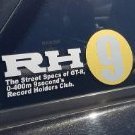Rb20 Build Direction
Announcements
-
Similar Content
-
Latest Posts
-
By dawhitehonky · Posted
Hi guys, Sorry to revive such an old post! The fuel pump in my M35 has finally given up, the car has been sitting for 3 years so I'm not surprised. I bought a Walbro GSS342 of Scotty some time ago, so I'll throw that one in. My question is, if my car has no performance mods at all, do I need really to mod the wiring to supply constant 12V? or will the new pump be just fine at the reduced voltage at idle? Thanks guys.. -
By Murray_Calavera · Posted
@TurboTapin I think you would really enjoy having a quickjack. -
That's a lot of bending moment to apply to a hook that was not intended for lifting though. I instinctively hate the idea.
-
By Murray_Calavera · Posted
Can you do the head gasket yourself or are you paying for labour?
-




.thumb.jpg.1b7f9b555236b5ea56c3fed20c733de8.jpg)
Recommended Posts
Create an account or sign in to comment
You need to be a member in order to leave a comment
Create an account
Sign up for a new account in our community. It's easy!
Register a new accountSign in
Already have an account? Sign in here.
Sign In Now